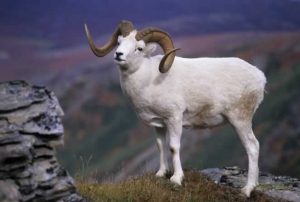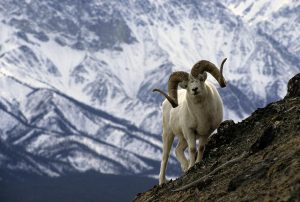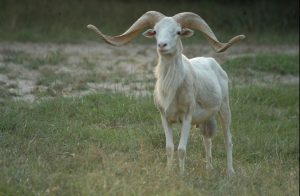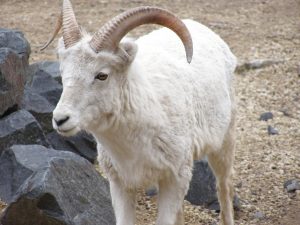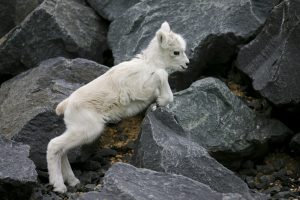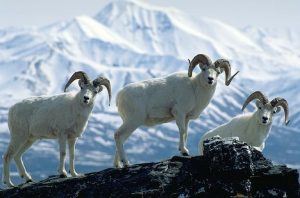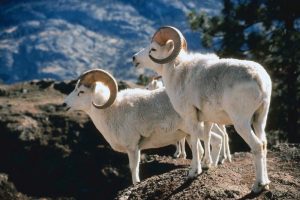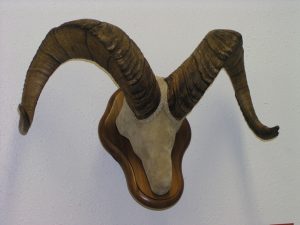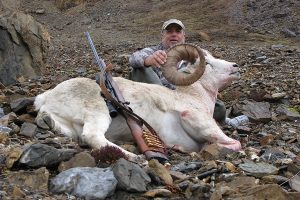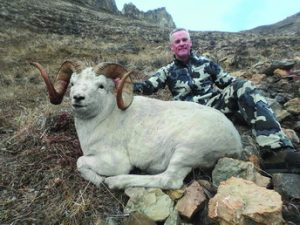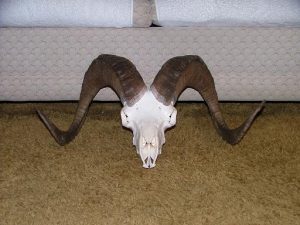Dall Sheep
Dall sheep, named after the American naturalist Mr. William Healey Dall, is an ungulate found in the Northwest of North America. The most striking feature is the massive curly horns in the males that add to its ornamentation. Females, on the other hand, have inconspicuous horns. The age rings on the horns, also known as annuli, are used in aging an individual.
Scientific Classification
| Kingdom | Animalia |
| Phylum | Chordata |
| Class | Mammalia |
| Order | Artiodactyla |
| Family | Bovidae |
| Subfamily | Caprinae |
| Genus | Ovis |
| Scientific Name | Ovis dalli dalli |
Quick Information
| Other Names | Thinhorn sheep, Dall’s sheep |
| Physical Characteristics | Average Body Size: Male – 4.26-5.84 ft (130-178 cm); female – 4.33-5.31 ft (132-162 cm) Average Height: 3.01-3.58 ft (92-109 cm) in males Average Weight: Male – 159.8-181.4 lb (72.5-82.3 kg); female – 102.2-111.1 lb (46.4-50.4 kg) Color: Creamy white to pure white fur and tail, some may sport a black tail, and gray patches on their backs Sexual Dimorphism: Males are larger and heavier than females; horns of the males are longer, curlier and pointier than those of females |
| Distribution | British Columbia, Yukon and Northwest Territories in Canada and Alaska in the United States |
| Habitat | At elevations of 6,562 ft (2,000 m) in Alpine and Arctic regions; grassy mountainsides during spring, higher alpine pastures in the summer, areas with less snowfall in the winter |
| Lifespan | 11-14 years |
| Communication | Through touch and chemical channels |
| Diet: What do Dall sheep eat | Herbivorous; eats sedges, grasses, lichens, dwarf willows, mosses |
| Adaptations | Males have two layers of bones in their skulls to protect from heavy injuries sustained during fights with other males; during winter, the pelage thickens by up to 2 in (5 cm) to absorb the cold |
| Breeding Season | Between late November to early December |
| Gestation Period | 175 days |
| Breeding Frequency | Reproduction occurs annually |
| Predators | Grizzly bears, black bears, coyotes, wolves; golden eagles prey on the young |
| Diseases | Pneumonia |
| IUCN Conservation Status | Least Concern |
Behavior
Male Dall sheep or rams do not mingle with the females, or ewes outside of the mating season. Instead they live in bachelor bands which has a social hierarchy, particularly during summer, with dominance determined based on the size of the horns.
Altercations are rare between the dominant and subordinate males but in case there are two rams with equal horn size, a fight generally ensues to establish order. Such fights are often noisy with each party backing off a certain distance before converging towards each other to butt heads.
Ewes live in groups consisting of other ewes, lambs, both immature males and females, and yearlings. Lambs are playful amongst themselves. Clashes between mature ewes are rare but when it does occur, usually the older individual prevails.
Mating & Reproduction
To detect an ewe in estrus, rams curl their lips and use their sense of smell. If such a female is found, the dominant male removes other potential mates from the area and pursues the female to gauge her receptiveness. If she submits, they mate, after which the male guards the female for 2-3 days to ensure she is not mated with by another male.
Life Cycle
A single lamb is born after the gestation period, twins may occur, albeit rarely. The juveniles weigh at around 6.6-8.8 lbs (3-4 kg) at birth. They become able to stand about 30 minutes after birth, and start to follow their mother after about a day. Growth rate of the lambs is rather quick.
Female Dall sheep reach sexual maturity at 2.5 years old while males attain gusto at 1.5 years of age.
Interesting Facts
- The horns of the Dall’s sheep are made of keratin which is the same substance found in human nails.
- It can take up to 8 years for the horns of a ram to grow to its entirety.
- The Denali National Park and Preserve in Alaska was established in the early twentieth century to protect the Dall sheep from over-hunting.
References
- https://www.adfg.alaska.gov/index.cfm%3Fadfg%3Ddallsheep.main
- http://animaldiversity.org/accounts/Ovis_dalli/
- https://digitalcommons.unl.edu/cgi/viewcontent.cgi?referer=&httpsredir=1&article=1028&context=zoonoticspub
- https://en.wikipedia.org/wiki/Dall_sheep
- https://www.iucnredlist.org/species/39250/22149895
Published on November 24th 2016 by Sudipto Chakrabarti under Coniferous Forest Animals.
Article was last reviewed on 9th May 2023.


